As consumers in the U.S. wrestle with accessing and paying for medical benefits, there’s another sort of health benefit people increasingly understand, embrace, and consume: food-as-medicine.
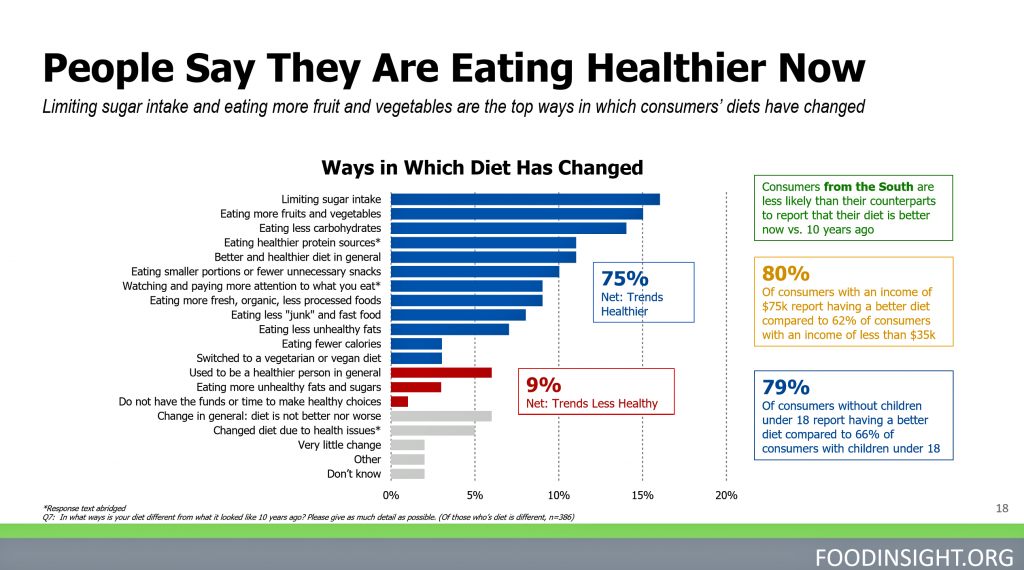 More people are taking on the role of health consumers as they spend more out-of-pocket on medical care and insurance, and seeking food to bolster their health is part of this behavior change. One in four Americans seek health benefits from food, those who don’t still seek the opportunity to use food for weight loss goals, heart health and energy boosting, according to the 2019 Food & Health Survey from the International Food Information Council Foundation (IFIC).
More people are taking on the role of health consumers as they spend more out-of-pocket on medical care and insurance, and seeking food to bolster their health is part of this behavior change. One in four Americans seek health benefits from food, those who don’t still seek the opportunity to use food for weight loss goals, heart health and energy boosting, according to the 2019 Food & Health Survey from the International Food Information Council Foundation (IFIC).
Each year, IFIC polls U.S. consumers on their perspectives about food, behaviors and shopping trends. Over the 14 years that IFIC has supported this research, health and wellness have emerged as major themes coming out of the study. For this research, IFIC surveyed 1,012 U.S. adults between 18 and 80 years of age, polled in March and April 2019.
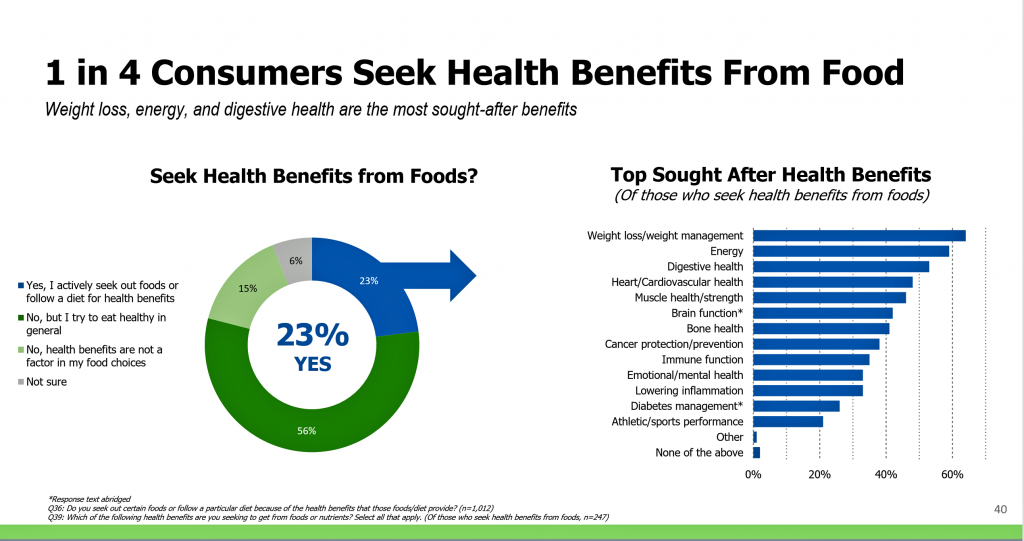 Topline, 53% of consumers said their health is excellent or very good: more people with higher incomes over $75K rate their health highly, versus only 31% of consumers with income under $35,000 a year. Similarly, in terms of socioeconomic status, 2/3 of college graduates rate their health excellent or very good versus 45% of people with less than a college degree.
Topline, 53% of consumers said their health is excellent or very good: more people with higher incomes over $75K rate their health highly, versus only 31% of consumers with income under $35,000 a year. Similarly, in terms of socioeconomic status, 2/3 of college graduates rate their health excellent or very good versus 45% of people with less than a college degree.
The IFIC survey drew a bottom-line for health and nutrition relative to income: wealthier Americans report having a better diet compared with people earning lower incomes.
Americans’ top purchase drivers for food are taste well above all, followed by price, healthfulness and convenience. These latter three drivers rank fairly close together.
Overall, the majority of Americans say they are eating healthier today, changing their diets in several ways: limiting sugar intake, eating more fruits and vegetables, consuming less carbohydrates, taking in more protein, and choosing a healthier diet “in general” are the top approaches to changing diets in America.
Four in 10 people followed a “diet” or eating style in 2019. The most commonly cited one was “clean eating,” followed by intermittent fasting, gluten-free, low-carb, ketogenic or high-fact, a weight loss plan, or the Mediterranean diet. a plant-based diet was noted by 5% of people, the first year this eating style was polled by IFIC.
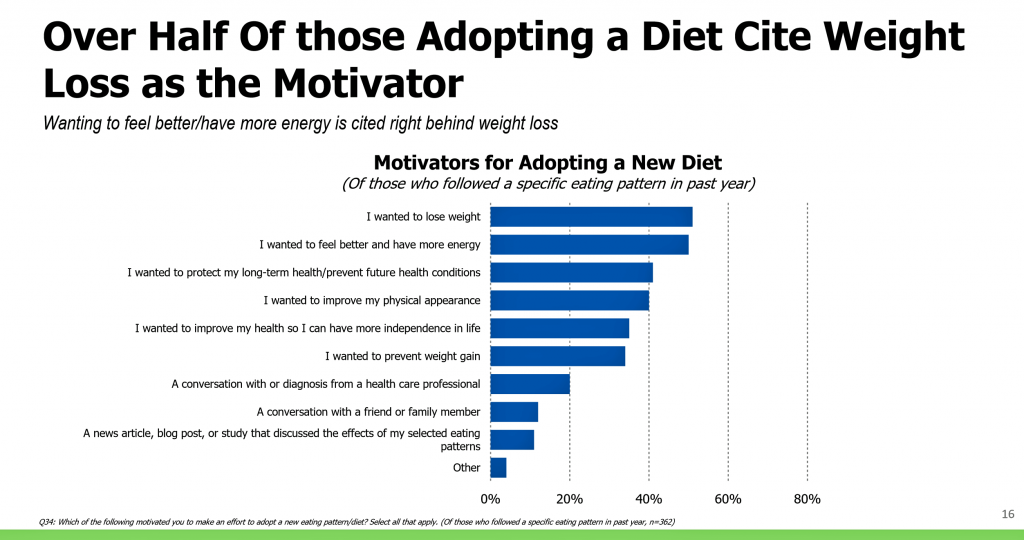 Losing weight is the top motivator for adopting a particular eating mode, noted by roughly 50% of consumers using a particular diet strategy,
Losing weight is the top motivator for adopting a particular eating mode, noted by roughly 50% of consumers using a particular diet strategy,
There are some important trends to note over time when it comes to diet choices: 50% of Latino/Hispanic consumers said their diet is quite different in 2019 versus 35% of non-Hispanic white consumers. And, 55% of consumers with allergies also note a very different eating approach now versus a decade ago.
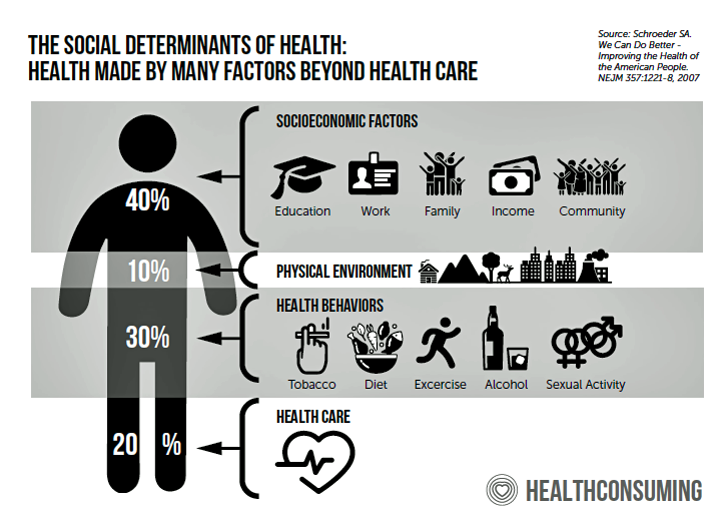 Health Populi’s Hot Points: Food is a key social determinant of health (SDoH), I point out in my book, HealthConsuming: From Health Consumer to Health Citizen. Here’s the graphic from the book with the long-time research finding that our socioeconomic status and health behaviors contribute much more to our overall health and life-span than medical services do.
Health Populi’s Hot Points: Food is a key social determinant of health (SDoH), I point out in my book, HealthConsuming: From Health Consumer to Health Citizen. Here’s the graphic from the book with the long-time research finding that our socioeconomic status and health behaviors contribute much more to our overall health and life-span than medical services do.
IFIC’s 2019 survey results call out the direct relationship between wealth, food, and nutrition intake. The subtext in some of the data in the report detail how people of color and with lower levels of education consume less healthy food based on different metrics, whether accessing more fruits and vegetables, adopting plant-based diets, or taking on healthier eating styles in general.
The chapter in HealthConsuming covering the importance of food-as-medicine for health is titled, “ZIP Codes, Genetic Codes, Food and Health.” The same issues that under-lie deaths of despair — increasing mortality for Americans due to overdose, accidents and suicide — are those factors that also compromise poor nutrition. In public policy, we can certainly address food and nutrition as a standalone issue for, say school lunches — where last week, the USDA proposed to cut funding and re-define just what a healthy lunch is, a program First Lady Michelle Obama bolstered during her tenure in the White House.
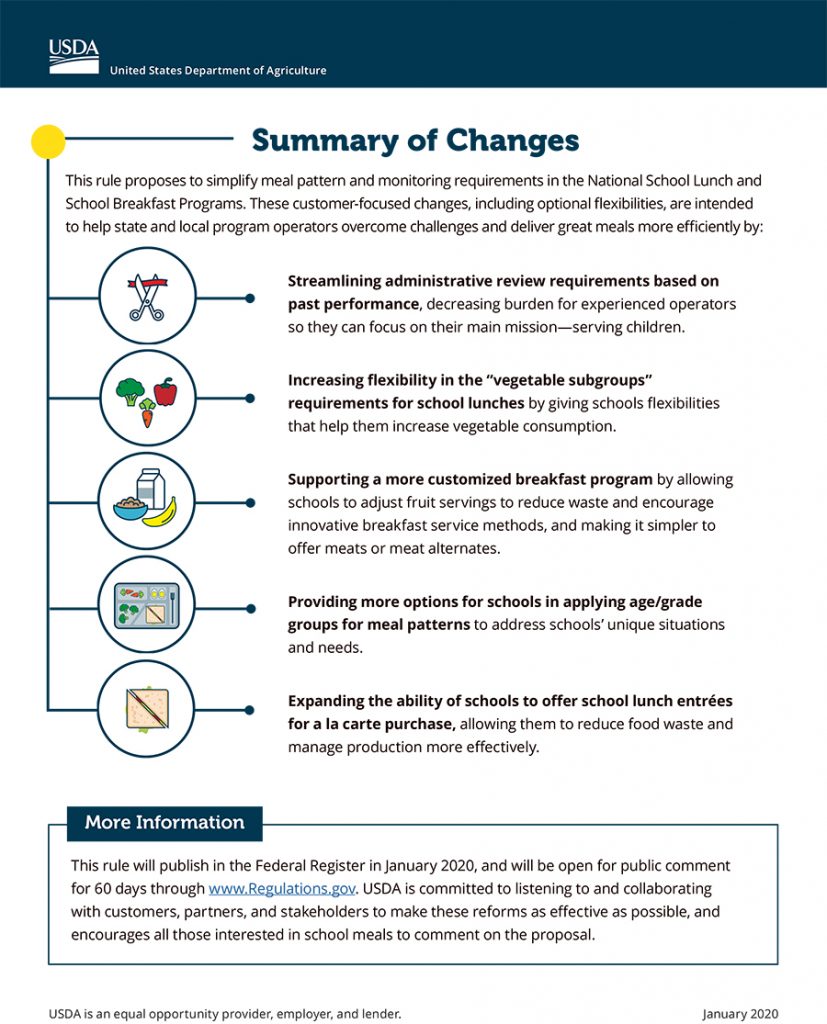 The Wall Street Journal wrote about this as, “relaxing school lunch healthy eating rules.” The Washington Post was more colorful in its description, saying this policy change equaled, “More pizza, fewer vegetables,” as the Trump administration “further undercuts Obama school-lunch rules.”
The Wall Street Journal wrote about this as, “relaxing school lunch healthy eating rules.” The Washington Post was more colorful in its description, saying this policy change equaled, “More pizza, fewer vegetables,” as the Trump administration “further undercuts Obama school-lunch rules.”
Americans, particularly those earning lower incomes, are in a bind when it comes to accessing healthy food which, in certain neighborhoods and ZIP codes. Tactics like school lunch programs that improve childrens’ access to and information about healthy eating help make health in local communities.
This new USDA policy “prescription” reminds me of that proffered in President Reagan’s era when ketchup was considered a vegetable. as Marion Nestle reminded us in this 2011 Atlantic essay.
But these programs magnify larger than “just” one school lunch for a single kid in a local school in a rural town. They can help kids and their families be healthier, more productive health citizens and workers in the larger national economy.


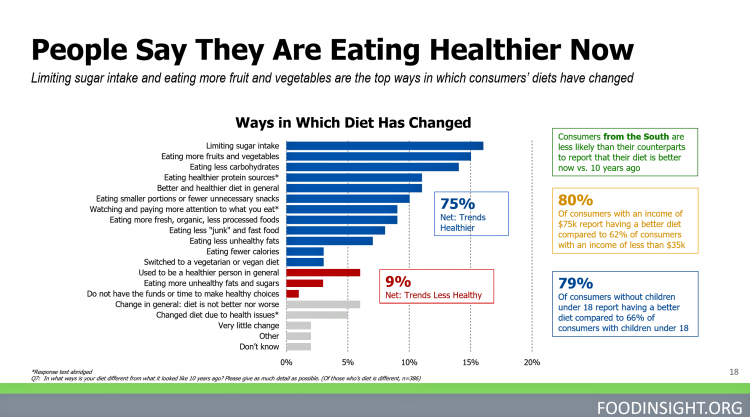


 I'm in amazing company here with other #digitalhealth innovators, thinkers and doers. Thank you to Cristian Cortez Fernandez and Zallud for this recognition; I'm grateful.
I'm in amazing company here with other #digitalhealth innovators, thinkers and doers. Thank you to Cristian Cortez Fernandez and Zallud for this recognition; I'm grateful. Jane was named as a member of the AHIP 2024 Advisory Board, joining some valued colleagues to prepare for the challenges and opportunities facing health plans, systems, and other industry stakeholders.
Jane was named as a member of the AHIP 2024 Advisory Board, joining some valued colleagues to prepare for the challenges and opportunities facing health plans, systems, and other industry stakeholders.  Join Jane at AHIP's annual meeting in Las Vegas: I'll be speaking, moderating a panel, and providing thought leadership on health consumers and bolstering equity, empowerment, and self-care.
Join Jane at AHIP's annual meeting in Las Vegas: I'll be speaking, moderating a panel, and providing thought leadership on health consumers and bolstering equity, empowerment, and self-care.